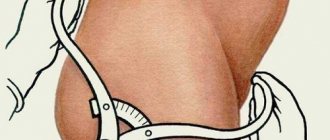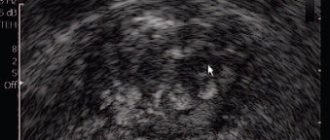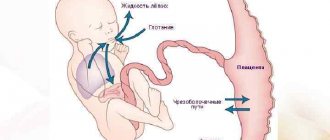The birth of a child is an important and touching event in the life of every woman. The first minutes of meeting your baby make you forget about the recently experienced torment of childbirth. This is an unpleasant, sometimes lengthy process that requires physical and emotional strength.
According to the World Health Organization, about 830 women in labor die every day due to complications arising during pregnancy and labor. Scientists believe that the main reason for difficult childbirth is human upright posture. The evolution of Homo sapiens (Homo sapiens) led to the fact that the skeleton of our ancestors gradually changed: it became more elongated, which affected the shape of the pelvic bone. The problem was also aggravated by changes in the lifestyle of ancient people, in particular the labor activity of women: there was a transition from gathering to agriculture.
In 2015, scientists from Harvard University concluded that if a woman's hips were a little wider, it would make labor easier. At the same time, scientific data has confirmed that the female pelvis acquires the most favorable shape for childbirth between the ages of 20 and 40. That is, childbirth is easier during periods of high fertility (the ability of the female body to continue giving birth). Some doctors believe that this may well explain the cause of difficult births in women after 40.
How to determine the onset of labor
Unfortunately, there is no clear order of events that indicate the onset of labor. Each pregnant woman goes through her own journey, which marks the beginning of labor. There are women who experience a surge of energy before giving birth, others feel lethargy and loss of strength, and still others may not even notice that their waters have broken.
Ideally, the birth process begins after the fetus has formed and has everything necessary for independent life and development outside the womb. The imminent appearance of the baby is indicated by the opening of the cervix as a result of contractions - rhythmic contractions of the uterine muscles. On average, the duration of contractions is 10-15 seconds every 15-20 minutes at the beginning of labor and at the peak of activity every 60 seconds 2-3 minutes. Contractions make it easier for the baby to move through the birth canal. Therefore, it is important for a woman to be able to breathe correctly both during contractions and after them.
An interesting fact is that contractions do not always begin when the water breaks. Although this plot formed the basis of many films: a woman feels a flow of water and after a couple of seconds becomes familiar with contractions. However, in real life this plot is far from the truth. The water may break even before contractions occur. By the way, the amniotic sac may begin to rupture gradually, so a woman may not immediately notice leakage of amniotic fluid (amniotic fluid).
Gynecologists say that premature rupture of amniotic fluid has different meanings: what happens does not always mean that the female body is ready for childbirth and does not always say the opposite. In any case, if a woman detects a break in her water, she should immediately consult a doctor, regardless of the stage of pregnancy. For each woman, the volume of water can be different (oligohydramnios, polyhydramnios) and sometimes leakage can occur even in the early stages of pregnancy.
Based on the research results, it was concluded that approximately ¾ of women were able to give birth within 24 hours after the amniotic fluid broke. Of these, more than half of the pregnant women did not even require stimulation.
If labor has not begun after the rupture of the amniotic sac, but the due date has approached, the woman is induced. When it’s the other way around, this indicates the onset of premature labor. Amniotic fluid helps protect the baby from external infections and contains a lot of nutrients (mineral salts, proteins, fats, glucose). Therefore, premature loss of water can threaten not only the health, but also the life of the child.
Pink or red discharge may indicate the onset of labor. This is the so-called process of the removal of the plug that closes the cervical canal. The plug helps protect the fetus from infection and may not come off completely, but in parts. As a rule, it goes away within a week before or during childbirth. However, her rejection can also be overlooked.
As for the uterine opening, it can begin either 2 weeks before birth or an hour before it. The obstetrician-gynecologist keeps this issue under control by conducting special vaginal examinations of the pregnant woman. The first dilation of the cervix can reach 4 cm, after which the uterine os can dilate up to 8 cm. In the active stage of labor, the uterus is fully dilated, which ranges from 10 to 12 cm.
First stage of labor: experiencing contractions
After the latent phase of labor, the active phase will begin, and at this moment you will find yourself in the delivery room or prenatal ward. Free behavior is encouraged here: you can find any position or movement in which contractions are easier to bear.
You will decide how to ease contractions:
- leaning your hands on the headboard, window sill, bedside table;
- On knees;
- squats;
- active walking;
- sitting on a fitball;
- acupressure and rubbing of the lower back.
Be mentally prepared for the fact that the active phase is quite painful: the strength and frequency of contractions increases. But try not to be afraid, because fear is the main enemy of a woman in labor. Save your strength and nerve cells, don’t get hysterical. I advise you to rest and relax your muscles in the intervals between contractions.
Auto-training also helps: repeat that you will meet the baby soon, you will cope with the pain and you will have enough strength for this. You can concentrate on some objects in the room, for example, paintings or photographs. You'll see: you won't notice how time flies. If you are having a partner birth, your husband can provide support and confidence that everything will work out.
Breathing plays a huge role in easing contractions: if you have trained it before and are familiar with the basic techniques, it will be much easier to survive the pain and maintain composure.
Another point: if indicated, the doctor may prescribe epidural anesthesia. In this case, a thin catheter is installed between the lumbar vertebrae, where a local anesthetic will be injected. The medicine is given under the strict supervision of a doctor. As a result, the lower abdomen becomes numb, and pain is noticeably muffled. Giving birth with or without epidural anesthesia is a personal decision for every expectant mother. I recommend discussing this issue with your doctor in advance.
The first stage of labor ends with full dilatation of the cervix - 10 cm.
Types of childbirth
If childbirth occurs through the female birth canal, it is a natural birth. When a woman is contraindicated to give birth due to health problems, the fetus is removed through surgery (for example, cesarean section). Most often, gynecologists do not allow expectant mothers to give birth on their own if they are diagnosed with:
- autoimmune diseases (liver cirrhosis, scleroderma);
- diseases of the upper respiratory tract, cardiovascular and endocrine systems (asthma, diabetes mellitus);
- tumors (malignant, benign);
- disturbances in the functioning of the kidneys and excretory system.
No doctor can guarantee exactly when and how quickly a woman will give birth, or whether it will be easy to do or not. In general, timely births are those that occur in the period from 38 to 42 weeks of the obstetric period. Premature - from 28-37 weeks. If the period is more than 42 weeks, such birth is called late.
According to the World Health Organization, more than 15 million babies are born prematurely every year. The birth of a child prematurely is the main reason for the presence of complications in the first 5 years of life with hearing, vision and breathing. Such complications can even lead to death.
Correct provision of first aid to the mother and newborn not only in the prenatal but also in the postpartum period helps reduce the risk of complications for premature babies. This is the use of antenatal injections for pregnant women (to prevent the onset of premature labor), an effective kangaroo care method (establishing close contact in the first hours of life between a mother and a child born prematurely), drugs for the treatment of infections in infants.
According to statistics, the main reasons for the premature birth of a baby are:
- multiple pregnancy;
- infections;
- high blood pressure, chronic diseases;
- genetic factors;
- ecology.
According to a team of scientists from the South Australian Institute of Health and Medical Research and systematic reviews from the Cochrane Library, increased consumption of omega-3 polyunsaturated fatty acids during pregnancy reduces the likelihood of preterm birth by:
- 11% before 37 weeks;
- by 42% up to 34 weeks;
- by 10% in children with low weight.
Late labor can be hazardous to the health of both mother and baby. After 42 weeks, the fetus continues to grow, gain body weight, and gradual ossification of the skeleton occurs. All this can complicate and delay the process of giving birth to a child, as a result of which the newborn may experience a birth injury.
Doctors include the main reasons for post-maturity:
- heredity;
- psychological factors;
- problems with a woman’s health, including biological unreadiness to give birth (placental dysfunction, lack of vitamins).
It is necessary to speed up labor only after consultation with a gynecologist. As a rule, the patient undergoes a procedure for inducing labor - preparing the cervix for labor by artificially dilating it under the influence of hormonal drugs. This is a gentle and effective option with virtually no serious consequences. After all, by the ninth month, the female pelvic bones are sufficiently apart and the stomach is lowered for the baby to be born.
Stimulation helps to provoke labor contractions and, through childbirth, relieve excessive stress on the female lower back, back and lower limbs. If stimulation does not produce results and the pregnancy is prolonged, a caesarean section is used.
American engineer Allen Downey analyzed information from the Centers for Disease Control and Prevention in 2002 and came to the conclusion that first births rarely occur on time. Not all women can accurately name the first day of their last period, which leads to errors in determining the period. At the same time, the results of another American study found that a healthy pregnancy develops up to 43 weeks.
Causes of labor pain
According to many years of observations by doctors and data from physiologists, many women experience almost no pain during contractions and pushing, behave quite actively or can even sleep. This cannot be called a phenomenon, since the source of labor pain is based in the cerebral cortex and is often activated by fear or confidence that pain is about to come.
In fact, when psychological factors are eliminated, expectant mothers experience only a pulling sensation in the lumbar region, where the nerve node is located. It innervates all the endings responsible for the female internal organs. Also, unpleasant mild pain appears in the lower abdomen at the moments when contractions occur. The reasons that more than seventy percent of women experience severe pain during labor lie in the structure of the female body, a sedentary lifestyle and prejudice.
Scientists who studied the life of small peoples of the Amazon and the Far North, where signs of civilization are practically invisible, were amazed at the ease with which native women give birth to children. They work physically, quite hard, until the onset of contractions, then retire for a while and return with the child in their arms. There are no signs of suffering on their faces. This happens, according to researchers, due to physical activity and the lack of psychological impact on girls.
In the cultures of such peoples, the process of pregnancy and childbirth is perceived as a taken-for-granted act, to which no special significance is attached. And every girl knows from childhood that, just like her mother, aunts and sisters around her, she will become pregnant and give birth to a baby. Of course, if complications arise, the woman most often dies, but in those cultures death is an absolutely natural phenomenon that is not given much importance.
In civilized countries, girls are taught from childhood, on a subconscious level, from the TV screen and from the pages of books, that pregnancy and childbirth are fraught with many dangers and the process of giving birth to a child is accompanied by enormous pain. Added to this is the sedentary lifestyle of most women, overeating and chronic diseases. All these factors together create the preconditions for a painful birth.
Take the first step
make an appointment with a doctor!
Preparing for childbirth
Before giving birth, a woman should have a bowel movement with an enema and not eat or drink during labor. When a woman’s mouth becomes dry, it is only permissible to rinse her mouth with water (wet her throat).
To clean your bladder, you need to go to the toilet every 2-3 hours. If you have problems with urination, you cannot do without a catheter. As a rule, difficulty urinating indicates the presence of pathologies. If this happens, the doctor prescribes additional tests.
What pain does a woman feel during childbirth?
Pregnant women who are about to give birth for the first time often ask: what can pain during childbirth be compared to?
There is no definite answer to this question, because each woman in labor has her own feelings. They depend on:
- pain threshold - low or high;
- the conditions in which childbirth takes place;
- the location of the baby in the uterus;
- presence or absence of stimulation, etc.
Most often, the pain is wave-like (with interruptions) and resembles the sensations of menstrual pain or a condition when muscles cramp.
But there is good news: normally, pain occurs only during contractions, and stops between them. It is during these breaks that you can relax, rest and gain strength for the next “wave”.
Stages of labor
The first stage of labor is considered the longest. The first contractions can last up to 10 hours, during which the body establishes the regularity and rhythm of contractions. Pregnant women experience mild or severe pain in the lower abdomen, as during menstruation, and discomfort in the back and lower back. For severe pain, the gynecologist may prescribe antispasmodic drugs. When the cervix dilates, the baby's head moves through the birth canal. During this time, doctors monitor the dilatation of the uterus, the movement of the fetus and the well-being of the woman in labor.
The expectant mother's pulse, blood pressure, temperature are measured, and attention is paid to her breathing, color and smell of vaginal discharge. As the baby moves, its location is constantly assessed. Breathing exercises help a woman in labor ease the effects of uterine contractions. When the next contraction occurs, you need to take a deep breath and exhale, which increases the flow of oxygen to the baby.
In the intervals between contractions, the woman can breathe at her usual rhythm. Breathing exercises significantly relieve pain. During this time, the woman in labor needs to walk or stand as much as possible. It is allowed to take a warm shower, which reduces the severity of unpleasant symptoms. As soon as the uterus dilates by 8 cm or more, the woman needs to take the birth position and continue to perform breathing exercises.
In our country, traditionally, the usual position of lying on your back is used for childbirth. However, in other countries, women practice squatting birth, kneeling or half-sitting in the water. Such options require certain knowledge and preparation to avoid possible complications.
Members of the Expert Committee of the American College of Obstetricians and Gynecologists and the Academy of Pediatricians believe that water birth can lead to complications. After all, none of the studies provides a complete picture of labor activity in aquatic conditions. During their analysis, no facts were found that refute the reduction in the risk of perineal rupture through water. The benefits of such births for mother and child have also not been proven.
However, these studies have documented cases of breathing problems in newborns born this way. There is also a risk:
- infection of the fetus through water with various infections;
- violations of thermoregulation of the child’s body;
- umbilical cord rupture;
- occurrence of asphyxia (lack of oxygen).
Experts have concluded that water births can only be considered experimental techniques. Their foundation must be based on clinical research, and data obtained from past studies must be carefully cross-checked.
In addition, to put such techniques into practice, it is necessary to develop a safe plan for moving a woman in labor to a gynecological chair in the event of force majeure.
The next stage of labor begins with the full dilation of the uterus and the birth of the baby (on average, 8-10 attempts). Before pushing, it is recommended to draw more air into the lungs, hold your breath and push at the doctor’s command. Do not strain your face and legs (hemorrhages may occur). During childbirth, a woman should, if possible:
- relax your body muscles and keep your legs straight so as not to injure the child;
- try not to scream, so as not to increase oxygen starvation of the fetus.
As a rule, childbirth proceeds well if the woman in labor is calm, relaxed and controls her emotions and consciousness. She is able to respond to medical commands, respond adequately to them and execute them in a timely manner.
If the mother is exhausted or has other problems with the baby coming out (labor slows or stops), the obstetrician can help remove the baby with special forceps or through an incision in the perineum (episiotomy).
Tearing of the vagina and surrounding tissues during childbirth is normal. Most often they appear when the baby's head comes out. Recently, in order to avoid severe tears, selective episiotomy has been used when necessary - incisions are made only where necessary (with a scalpel or scissors).
In the UK, more than 1,000 women every day face the need for stitches in the perineal area after childbirth. Test results have shown that suturing becomes less painful if the continuous wrapping suture method is used not only in the vaginal area, but also in the perineum. This suggests that subcutaneous suturing is more effective and less painful, and does not require more painkillers both before and after the procedure.
What to do during contractions?
It has been noticed that the more scared a pregnant woman is, the less she knows about what is happening to her and what is ahead of her, the more difficult, longer and more painful her birth is. Even in the very recent past, the phrase “preparing for childbirth” seemed complete nonsense in Russia. Fortunately, over the last decade there have been qualitative changes in this area - many courses and schools have been opened to prepare for childbirth, where not only expectant mothers, but also expectant fathers are preparing for this important event. Enough books have been published. And most importantly, the psychology has changed. Now, if not all, then most women understand that they need to prepare for childbirth, like for any difficult and important work. And the main goal of such preparation is to get rid of fear and pain.
What do experts usually recommend to make contractions as easy and painless as possible? As already mentioned, you will not be able to control the frequency and strength of contractions; this does not depend on you. But you can completely help yourself and your child survive these contractions.
- At first, when contractions have just begun, it is better not to lie down, but to move: this will speed up the process of opening of the uterine pharynx, and therefore shorten the time of labor.
- Concentrate calmly and try to find the body position in which you are most comfortable. Feel free to get down on all fours, lie on a big beach ball, or even... dance. Believe me, no one would even think of judging you for extravagance. Circular and rocking movements of the pelvis help relieve tension and reduce pain.
- If possible, try to sleep between contractions, or at least “pretend to be asleep” (this will help your body relax).
- You can lie down for ten minutes in a bath with warm water - of course, if you are not alone in the apartment and they can help you if necessary.
- Lightly stroking the skin of the lower abdomen with your fingertips eases contractions at the beginning of the journey. As the contraction begins, you need to inhale and direct the movement of your arms from the midline to the sides; as you exhale, your arms move in the opposite direction.
- When contractions intensify, strong and frequent pressure with your thumbs on points in the area of the anterior superior iliac spines (these are the most protruding parts of the pelvis) helps relieve pain. Place your hands comfortably with your palms along your hips.
- Massage of the sacral area of the spine is very useful. It is effective not only at the beginning of contractions, but also throughout the entire time that expelling forces are operating in your body.
- As contractions intensify, proper breathing becomes increasingly important.
But the most important thing is to tune in, listen to your own feelings and... remember about the child. You both have difficult work ahead of you, but the result will be a meeting!
1 You can read in detail about the symptoms of the onset of labor in the article How labor begins. 2 We also recommend reading the article How to understand that it’s time to go to the maternity hospital: 5 signs.
General anesthesia
This type of anesthesia is usually performed only in case of surgery, while the patient is under anesthesia, unconscious and does not feel anything. During the operation, food or liquid from the mother's stomach may enter the lungs, so the expectant mother is not recommended to eat or drink anything during labor. You can only rinse your mouth if you are very thirsty. If doctors do not know whether the patient has eaten food, then during a cesarean section a special tube will be inserted into her trachea to protect her lungs. General anesthesia usually does not affect the child’s condition, since the drugs are administered directly in the operating room and usually very little time passes.
Whatever the reasons why a woman resorts to the use of pain relief during childbirth, she must certainly be informed about all possible complications and side effects of the drugs administered and their effect on the child’s body. It is unacceptable to use any type of anesthesia without the consent of the patient if she is conscious. The exception is emergency situations that threaten the life of the mother.
Pros and cons of drug pain relief
During the administration of any medicine, including analgesics, there is always a risk of it penetrating the placental barrier and causing harm to the baby. Currently, almost all drugs approved for use during labor are not dangerous for infants, but can cause minor abnormalities in the respiratory system and a decrease in the overall Apgar score.
Often, if very severe pain occurs during contractions, doctors use narcotic analgesics. They not only act like antispasmodics, relieving spasm of the cervical muscles, but also stimulate contractions at the level of brain receptors and significantly reduce pain. These drugs are administered intramuscularly or intravenously, many women after fifteen minutes notice a decrease in pain during contractions, the appearance of mild drowsiness and peace.
However, narcotic analgesics penetrate in full into the blood of the fetus, provoking depression of respiratory functions and a general lethargic state of the baby. The problem also arises from the fact that the drug is eliminated from the baby’s body seven times slower than in an adult, and therefore, immediately after birth, such children may need the help of a resuscitator. Knowing these problems, doctors may inject an antagonist drug into the baby's umbilical vein to speed up the elimination of the drug.
If a woman’s anxiety and muscle tension are too high, she may be prescribed mild tranquilizers, which do not relieve pain but relieve tension. An injection of such a medicine usually has a positive effect on emotionally labile women prone to hysteria and has a mild sedative effect. Tranquilizers can harm a child, causing allergic reactions and depression. The severity of side effects depends on the dose of the drug.
During childbirth, the doctor may give an injection into the perineal area to prevent sharp pain when it is stretched or torn. This is done mainly with the drug lidocaine or similar. It does not cause side effects and does not harm the baby, but it also cannot be used as an effective pain reliever.
Of course, in case of very severe, unbearable pain or a long labor, the woman in labor has the right to ask for an injection of a narcotic drug, but the expectant mother must remember that the harm from the drug to the baby can be irreparable. Therefore, before giving birth, you need to do everything that is necessary to ensure the normal development of the birth process, try all the relaxation and breathing techniques that relieve pain. After all, restoring a child’s normal condition after complications caused by the use of narcotic analgesics can be quite lengthy and difficult.
Take the first step
make an appointment with a doctor!
Epidural anesthesia
Advantages
Epidural anesthesia is absolutely safe for the child; its use completely anesthetizes and relieves sensitivity, which is why it is often used during a cesarean section. The patient remains conscious, but feels absolutely nothing, however, with the introduction of small doses of anesthetics, some women feel uterine contractions.
An epidural anesthesia procedure is performed under local anesthesia in the lumbar region, then the doctor uses a thin long needle to insert a catheter into the spine, more precisely into its epidural space, through which a dose of anesthetic is administered, if necessary. After the procedure, you need to lie down for fifteen minutes, during which time the medicine will begin to act. The catheter is not removed until labor is over; patients are usually not recommended to get out of bed and lie down, but there is also a mobile version of epidural anesthesia.
According to reviews of patients who have undergone childbirth with this type of anesthesia, pain is practically not felt, especially if an additional dose of medication is administered in a timely manner. However, there are strict contraindications for this procedure:
- Various neurological diseases;
- placental bleeding or any other origin;
- use of anticoagulants or bleeding disorders.
And finally, refusal of such a procedure is also a categorical contraindication.
Side effects
Typically, when a woman thinks about the side effects of this type of pain relief, she thinks about paraplegia, spinal nerve damage, or respiratory arrest. However, these complications are rather exceptions. The main danger is the long-term consequences: headaches, severe back pain that can last for months. Drug therapy for such pain usually does not produce results and it only goes away over time. While the medication is in effect, the patient may experience chills, trembling, decreased blood pressure, and difficulty breathing. You must tell your doctor about all the symptoms so that, if necessary, he can prescribe symptomatic treatment. Difficulty breathing occurs quite often during epidural anesthesia. This is a consequence of too large a dose of the administered drug and requires the use of an oxygen mask.
Take the first step
make an appointment with a doctor!
According to the latest data from medical studies, the use of epidural anesthesia in almost half of the cases led to various difficulties during childbirth. Since the woman in labor cannot control the birth process and does not understand when to push. In forty percent of cases, this led to protracted labor, forceps on the baby's head and traumatic brain injuries to the child. The high probability of ruptures of the perineum and vagina during such childbirth also does not add advantages to such anesthesia.
Approximately forty-five percent of women who undergo it experience this reaction to epidural anesthesia. This is quite a lot and before agreeing to such a procedure, you need to carefully weigh and think it over.








